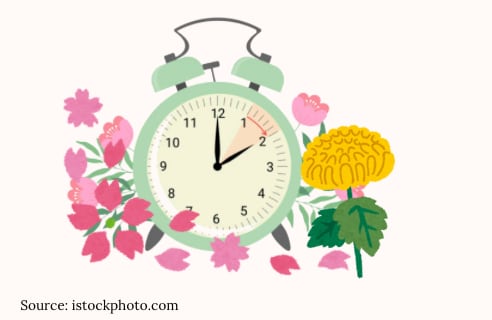A Childhood Favorite
Many are familiar with Winnie the Pooh from the Disney movie, released on July 15, 2011. This honey-loving, soft-spoken bear has become a beloved and internationally recognized character, with a long-lasting legacy going far beyond his years. With National Winnie the Pooh Day declared on January 18, it’s a good time to look back on the journey of creating such a simple yet renowned character. From a real bear to a child’s stuffed toys, the inspirations behind the creation of Winnie the Pooh are certainly beyond expectations.
The Army to the Zoo
The first inspiration for Winnie the Pooh stems all the way back to World War I, from a Black Bear in the London Zoo named Winnipeg, or Winnie for short. Winnie was bought in 1914 in White River, Ontario. Harry Colebourn, a veterinarian who became a Canadian soldier, bought her for $20, or about $429 in today’s money, and received her at a train station. (It’s true, the original bear who inspired the creation of Winnie the Pooh was actually female.) From here,
Winnie became the mascot for the 2nd Canadian Infantry Brigade, the troop which Colebourn was part of, and she became a companion for many of the soldiers during these tough times. However, when the brigade had received news they were going to France, they were told that Winnie had to be left behind. This was when she was settled in the London Zoo from 1915 to her death in 1934.
During this time, the author of the original Winnie the Pooh books, A.A. Milne, and his son, Christopher Robin Milne, were frequent visitors to the zoo. Winnie was one of the most beloved animals there, known for her tame nature, which stemmed from her interactions with the soldiers of the brigade. Children could ride on Winnie’s back, feed her, and play with her, which made her a favorite for many. Among these crowds of fan was young Christopher Robin, who was aged 1-2 years at the time.
A Young Boy’s Bear
At home, Christopher Robin had a stuffed bear, which he originally named “Edward Bear”, yet quickly changed to Winnie after his favorite animal at the zoo. This later became Winnie the Pooh after he combined the name of one of his friend’s pet swans at the end. Additionally, Christopher Robin had a whole variety of toys, which later inspired Winnie the Pooh’s friends in the books and the movie: Eeyore, Tigger, Kanga and Piglet. Today, these plushies are currently on display as part of the Polonsky Exhibition of The New York Public Library's Treasures at the Stephen A. Schwarzman Building on 42nd Street, which can be seen on the right, where their legacy in literature remains appreciated.
The Stories of Winnie the Pooh
The original author of the Winnie the Pooh children’s books was A.A. Milne, with his illustrator, E.H. Shepard. The first book, Winnie-the-Pooh, was published on October 14, 1926, which included Winnie the Pooh along with some of his other friends: Piglet, Eeyore, Kanga, Owl and Rabbit.These books were incredibly popular, Milne’s first book being translated into other languages such as Latin, which became the first foreign-language book to ever make the New York Times Best Sellers list. The setting of the books, and later the movie, was the Hundred Acre Woods, with many colorful spring elements in it. This setting is actually based on Ashdown Forest in East Sussex, a national forest in England, which was a mile away from Milne’s home that he had bought.
Additionally, in the books, Winnie the Pooh never actually had the red shirt he’s known for. The red shirt is actually credited to Stephen Slesinger, who first introduced it in the board game he made after buying the merchandising rights to Winnie the Pooh in 1930. By the next year, the business made 50 million dollars every year, and Milne also kept 66% of the funds.
The Disney Movie
Walt Disney was first interested in getting the rights to make a movie out of the book in 1938, as his daughter Diane was enamored by the Winnie the Pooh books. In the 1960s, he made a deal with Milne and the Slesinger family, and by 1964, Disney had plans to create short films based on the books. The first film of the franchise was Winnie the Pooh and the Honey Tree, released in 1966. The plot revolves around Christopher Robin’s bear, Winnie the Pooh, trying to raid a beehive in a tall tree for honey. Other short films were also made, like 1968’s Winnie the Pooh and a Blustery Day, which won an Oscar, and 1974’s Winnie the Pooh and Tigger Too. After many featurettes in a series, the movie that we know and love today was released much later in 2011, which also promoted merchandise and advertisement, and that’s how many people remember Winnie the Pooh to this day. National Winnie the Pooh Day definitely has a great purpose, for us to all remember the rich history that made such a well thought out character, who is a staple of many people’s childhoods
SOURCES:
Combemale, Leslie. “From Milne to Disney Movies: The History and Art of Winnie the Pooh.” Artinsights Film Art Gallery, 10 June 2024, artinsights.com/from-milne-to-disney-movies-the-history-and-art-of-winnie-the-pooh/.
“The Real-Life Canadian Story of Winnie-the-Pooh | Articles | CBC Kids.” CBCnews, CBC/Radio Canada, www.cbc.ca/kids/articles/the-real-life-canadian-story-of-winnie-the-pooh. Accessed 17 Jan. 2025.
Mattick, Lindsay. “The Story of How Winnie the Pooh Was Inspired by a Real Bear – in Pictures.” The Guardian, Guardian News and Media, 24 Nov. 2015, www.theguardian.com/childrens-books-site/gallery/2015/nov/24/winnie-the-pooh-inspired-by-a-real-bear.
















